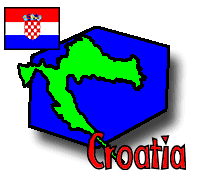Person of the Day: Jasenka Zuvela-Splivalo![]()
Place of the Day: S(h)kola Likovnih Umjetnost (School of Fine Arts)![]()
Tech Fact of the Day: the oldest church in the world
Group Dispatch, April 20

Questions? Ask Ethan ![]() !
!
Return to Fast Facts
 |
 |
 |
 |
 |
|
Itinerary/ Journal |
Discussions |
About Croatia |
eDscape Projects |
Scrapbook |
|
|
|
|
|
|
|
Copyright 1997-99 BikeAbout. All rights reserved.
